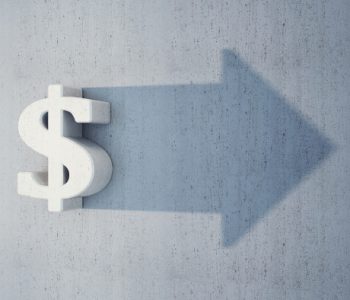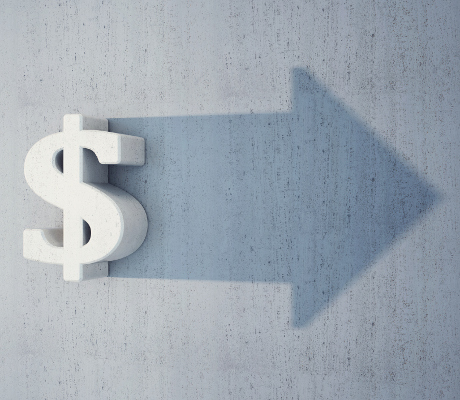10 Determinants of the Dividend Policy of Any Company

Factors Affecting the Dividend Policy
Many investors tend to flock to dividend-paying companies because they provide a source of income. But there is a lot of work done on the company’s end to determine how much to pay shareholders and what changes to make to the dividend policy. No matter what your income needs are, there are internal and external factors that will affect the dividend policy of the companies you have invested in.
There are many different dividend-paying stocks and each company would fit into various categories. Some dividend-paying companies offer a high-dividend-paying stock, a dividend grower, or a steady payer. But no matter the category, every company goes through the same dividend policy process before a payment is made.
What is meant by dividend policy?
A dividend policy is a set of rules that are used to determine how much to pay out to shareholders and how often, as approved by the board of directors. All dividend companies use different metrics and factors to determine how much to pay out.
It is important for income investors to understand what goes behind a business’ dividend policy. After all, there could be changes made that you may not have expected due to a lack of research.
Below is a list of seven different dividend payments and 10 determinants of the dividend policy of any company.
Various Type of Dividend Payments
| Dividend Type | How the dividend is received? | Why would you get the Dividend? |
| Cash Dividend | Cash payment | The company wants to profit share with its shareholders |
| Stock Dividend | Receive addition shares | Company wants to reward its shareholders and does not want to use cash to do so |
| Homemade Dividend | Investor will sell its shares in a company that he/she already owns | Need cash for personal reasons (Shareholder control this) |
| Special Dividend | Receive a extra dividend payment in addition to the regular one pay out. | The company has extra cash in its bank accounts and has no other use for it |
| Property Dividend | Non-monetary dividend payment; will receive payment in the form of the company’s assets such as: inventory and equipment. | Since shareholders are part-owners of the company they will receive the benefit from the sales transactions of the company’s assets. |
| Scrip Dividend | Future cash dividend payment | The company does not have cash now to pay out a dividend, which it normally would pay out. |
| Liquid Dividend | Cash payment. | A company is closing down their business and selling all assets. Once all the debts are paid the remaining money is paid back to shareholders. |
Internal and External Factors Affecting Dividend Policy
1. Industry of Operations
The industry of operations for a company is one external factor that affects its dividend policy. Even with the best management team, some industries have earnings that could be described as a roller-coaster ride, if companies greatly impacted by the performance of the economy are any indication.
As long as the economy is performing well, earnings should come in strong, leading to shareholders receiving some of the revenue. When there is a dividend in place, a lower percentage is typically paid, since there is always uncertainty about future earnings.
A recession or weak growth could lead to a dividend cut or possibility no dividend payment at all. This can be seen in sectors like commodities and consumer discretionary.
There will be companies that perform well in both weak and strong economies. These are businesses with consistent and growing dividends, and since revenue is recurring, the dividend tends to be higher. Sectors with such businesses include telecommunications and utilities.
2. Company’s Age
A company that has just been newly formed will look to use all its earnings to grow the business, so a dividend is unlikely. This is also common among businesses that are growing at a very high rate.
On the other hand, a company that is fully established in its market segment can afford to pay a dividend, since there will be fewer opportunities for growth to gain market share. In addition, the revenue is more predictable and recurring so there is no uncertainty about the future.
3. How a Dividend Amount is Determined
The pattern of past earnings is also given consideration and will determine the amount of the dividend.
Businesses with consistent recurring revenue will use a payout ratio for dividend payments. For example, a company may pay out 50% of its earnings as a dividend, meaning each dollar of earnings translates to a $0.50 dividend payment.
A company that sees its revenue fluctuate year-to-year will tend to use the payout ratio as well. However, the amount paid out could change dramatically each year, being higher in years of high profits and vice-versa.
Another method is a fixed dollar amount, which is exactly what it sounds like: a predetermined dollar amount given to shareholders no matter the state of earnings. This method is used when a company knows the exact amount that the dividend obligation will be. And in years of high profits, a special dividend can be paid out in addition to the regular payment.
4. Shareholder Base
The sector and growth rate of a company will label it with an identity, such as “growth company,” “mature company,” or “startup.” This identity will be linked to the type of investors it attracts.
For instance, a mature business will not see many growth opportunities and pay a large amount of earnings via the dividend; investors are aware of this and are simply looking to earn a income from the investment. The company will ensure that the dividend is steady, with potential opportunities to increase it based on the dividend policy and revenue.
5. Business Requirements
Determinants of a business’ dividend policy depend on its goals. A company that is looking to grow by investing in its business or making an acquisition will look to keep as much cash as possible within the organization. This means that if there is a dividend, it will only pay out a low percentage from earnings.
A company may also be in an industry which sees frequent change, creating a need to have cash on hand to make the necessary changes. One area known for this is the technology sector, which could easily change in as little as a month. By hoarding cash, tech companies will reduce the likelihood of using debt to fund these requirements.
6. Inflation
The company bigwigs will look at inflation from the point of view of both the business and investors, specifically in regards to how revenue is impacted. The projections for the company will factor in inflation, making exceptions if revenue can grow at or above the inflation rate.
This makes it possible to maintain a certain payout ratio and retain what remains for internal investments. A company that sees its revenue increase will most likely raise its dividend to ensure that investors do not get negatively impacted by inflation.
The business will also look at how inflation has affected the cost of living across the country, because many investors look to dividend-paying companies to support their income needs. If the dividend growth does not keep up with the inflation rate, then their purchasing power of goods and services decreases as a result. This could lead to investors looking at other opportunities in the marketplace that will satisfy their needs.
7. Liquidity
There will be times a company would want to reward its shareholders with a cash dividend, but is unable to do so. A common reason is that it needs the cash to ensure it is able to pay for vital things such as employee salaries, rent, and utilities bills.
One option that a company can use is giving its shareholders a stock dividend. This would add to the number of shares owned by an investor and will give them the choice of either holding on to the shares or selling them for cash.
8. Government Regulations
There could be rules put in place by the government, depending on how the company in question is structured.
One example is master limited partnerships (MLPs), which get preferred tax treatment on their earnings, though they are required to pay out at least 90% of their earnings to shareholders. As earnings grow, the dividend would increase as well to ensure it meets the payout ratio requirement that are set. This would be an example of an external factor that affects the dividend policy.
9. Taxation on Dividends
A management team will take a look at how shareholders will be affected when it comes to taxes because they will impact investors’ overall wealth–namely, they’ll have less money.
If there is a large tax rate that will be charged on a cash dividend, there may be alternative methods used to reward shareholders. One such method is a stock dividend, which gives investors more shares of the company. The control of taxes will be in the hands of shareholders and will be due when the shares are sold.
Another method that is commonly used by companies is by repurchasing shares that are outstanding. This does not result in investors receiving more cash or shares of the company, instead owning a larger percentage. There are also no tax consequences until the shares are sold.
There will be some cases where a company may only one means of paying shareholders, such as a cash dividend payment, while others will use multiple options, like cash dividends, stock dividends, and share buybacks.
As a shareholder, it is best to take a look at the history of a company’s payout methods because those same methods could continue to be used. As such, knowing this information could help to benefit your overall net worth.
10. Leverage
A company may want to pay a dividend, or increase an existing one, but lack the ability to do so. For instance, having a lot of debt on the balance sheet means there’s an obligation to repay the debt and its interest first. Therefore, the cash earned from operations will already be earmarked towards the debt.
Once the leverage on the financial statements is reduced or eliminated, then there are possibilities of seeing a dividend added or increased.











